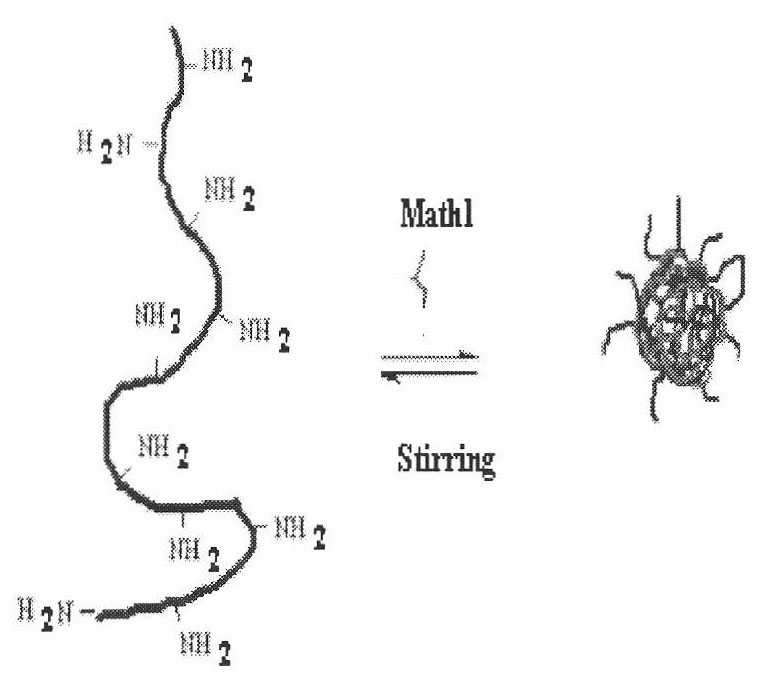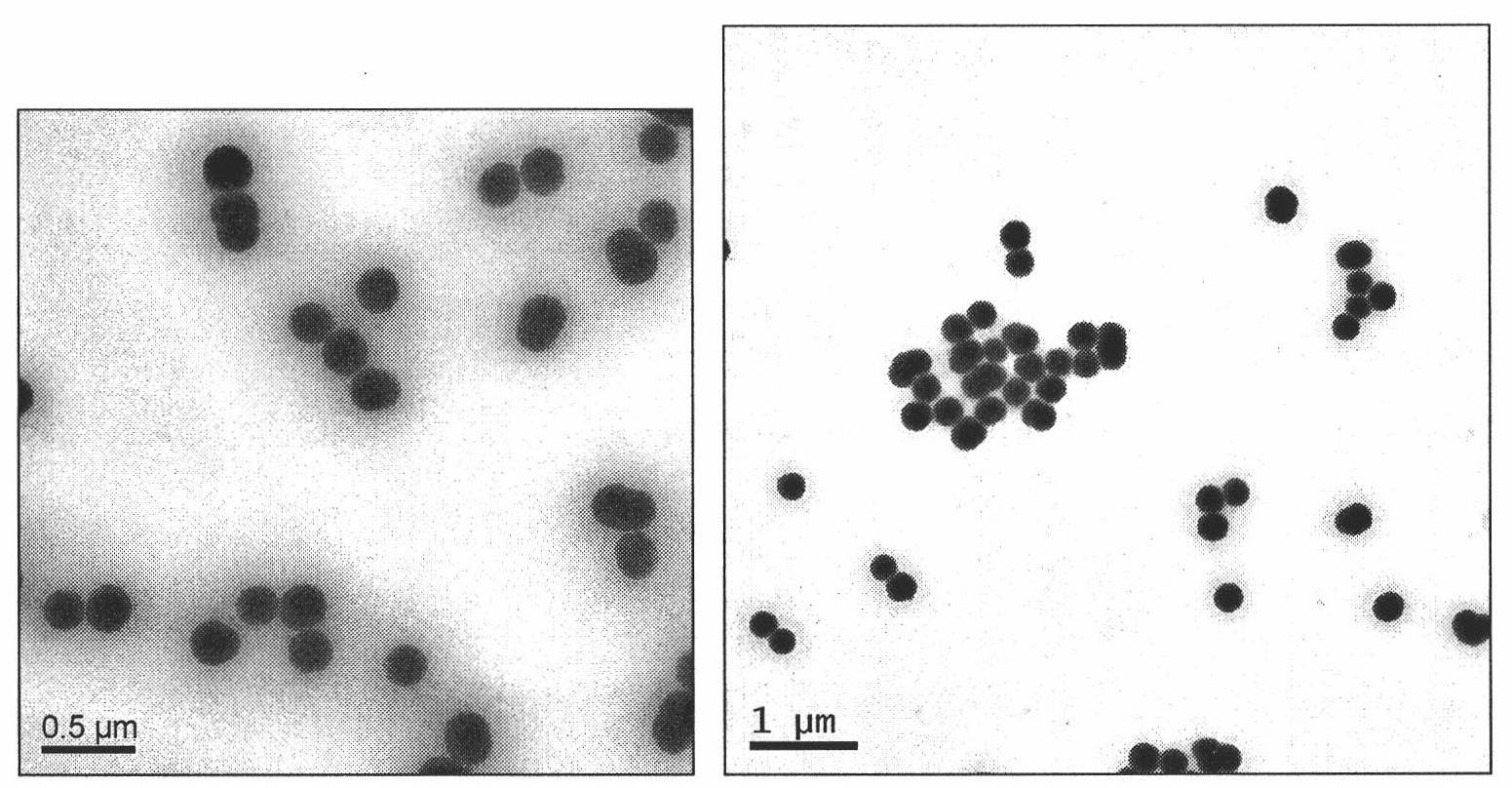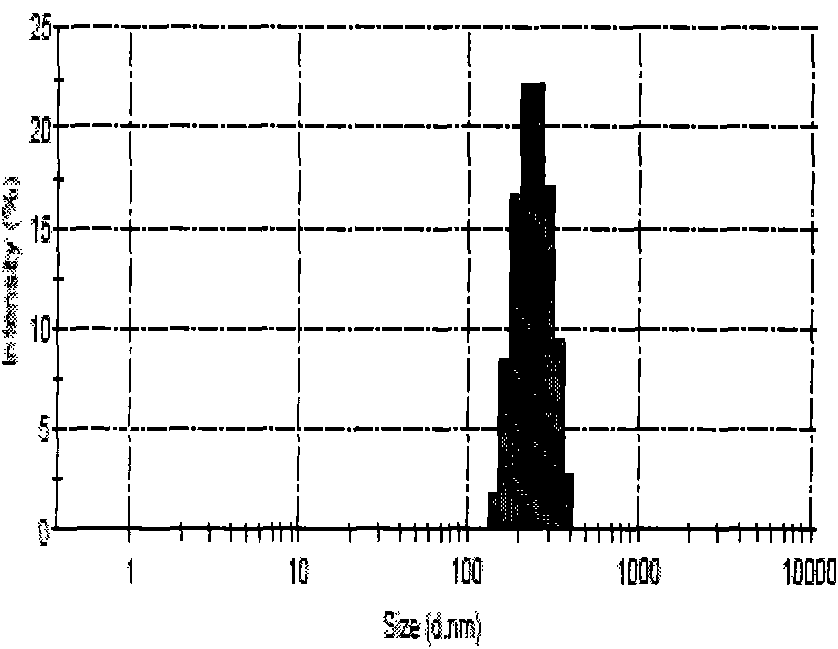Chitosan-Math1 gene nanoparticle and application thereof in treatment of deafness
A nanoparticle and chitosan technology, applied in the field of nanomaterials, can solve unseen problems and achieve the effects of easy control, uniform size and control
- Summary
- Abstract
- Description
- Claims
- Application Information
AI Technical Summary
Problems solved by technology
Method used
Image
Examples
Embodiment 1
[0050] Embodiment 1: Construction of PRK5-Math1 plasmid
[0051] The total RNA of the 16-day brain tissue of embryonic mice was extracted by the Trizol method, cDNA was synthesized by reverse transcription, and the Math1 gene containing the E box was synthesized by the PCR method, and ECOR1 and BamH1 restriction sites were added to the 5' and 3' ends. The PCR amplified product was digested with ECOR1 and BamH1, and after purification, it was ligated with the PRK5 plasmid (Clontech Company) digested with ECOR1 and BamH1 to construct the PRK5-Math1 plasmid. The Math1 gene has Figure 5 sequence shown.
[0052] Amplification primers are as follows:
[0053] F: 5'-GGAATTAAAATAGTTGGGGGACC-3',
[0054] R: 5'-TGGACAGCTTCTTGTTGGCTT-3',
[0055] Amplification conditions were: 94°C for 5 min; 94°C for 1 min; 58°C for 40 sec; 72°C for 40 sec; 35 cycles, 72°C for 5 min.
Embodiment 2
[0056] Embodiment 2: Construction of PRK5-Math1-EGFP plasmid
[0057] The plasmid pEGFP-C2 (Invitrogen Company) containing the EGFP gene and the PRK5-Math1 plasmid of Example 1 were double-digested with Hpa1 and Xbal1 enzymes, respectively, purified and recovered, and connected by T4 ligase to construct the PRK5-Math1-EGFP plasmid.
Embodiment 3
[0058] Example 3: Amplification and purification of PRK5-Math1-EGFP
[0059] Take 5 μl of plasmid PRK5-Math1-EGFP, add 100 μl of competent Escherichia coli DH5α bacteria, mix well, ice-bath for 30 minutes, heat shock at 42°C for 1 minute, ice-bath for 2 minutes, add 800 μl of LB medium, and incubate at 37°C for 1 hour. Take 100 μl of the bacterial solution and spread it on a plate containing ampicillin, and incubate it upside down at 37°C for 16 hours. Pick a single colony from the plate, inoculate it in 5 ml of LB liquid medium containing ampicillin, shake at a constant temperature of 37°C overnight, and grow the bacteria to late logarithmic phase. Plasmids were extracted according to the instructions of the plasmid extraction kit (QIAGEN).
[0060] Take 0.5-1 μg of the plasmid, add 5U of endonuclease (no more than 1 / 10 of the total reaction volume), the reaction volume is 20 μl, bathe in a warm water for 2 hours, and take a small amount of samples for agarose gel electropho...
PUM
| Property | Measurement | Unit |
|---|---|---|
| particle diameter | aaaaa | aaaaa |
| electric potential / voltage | aaaaa | aaaaa |
| molecular weight | aaaaa | aaaaa |
Abstract
Description
Claims
Application Information
 Login to View More
Login to View More - R&D
- Intellectual Property
- Life Sciences
- Materials
- Tech Scout
- Unparalleled Data Quality
- Higher Quality Content
- 60% Fewer Hallucinations
Browse by: Latest US Patents, China's latest patents, Technical Efficacy Thesaurus, Application Domain, Technology Topic, Popular Technical Reports.
© 2025 PatSnap. All rights reserved.Legal|Privacy policy|Modern Slavery Act Transparency Statement|Sitemap|About US| Contact US: help@patsnap.com



